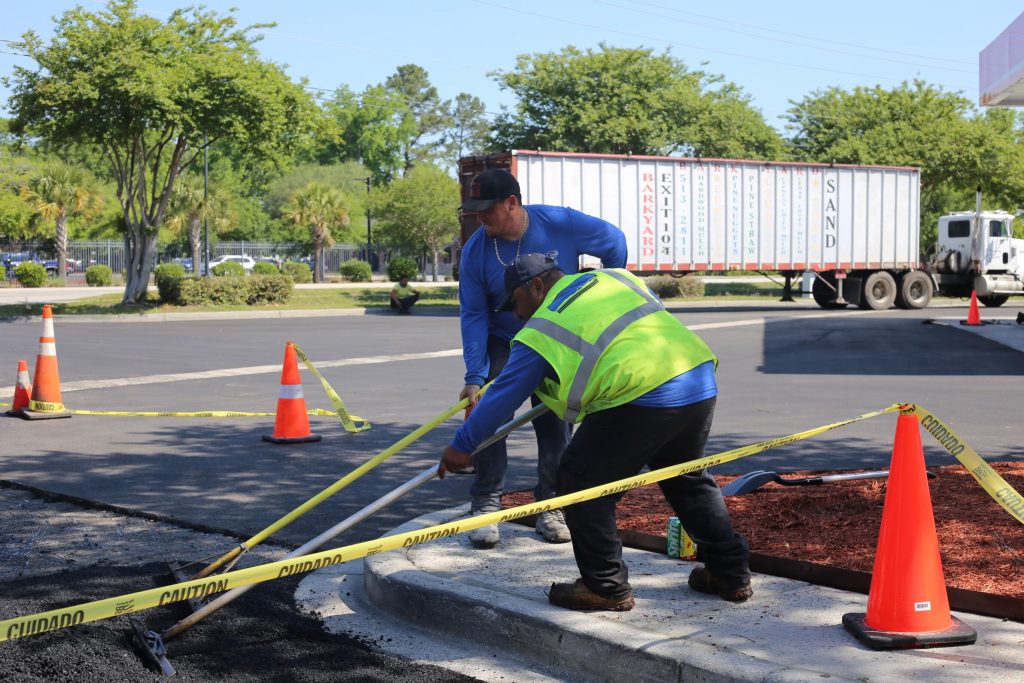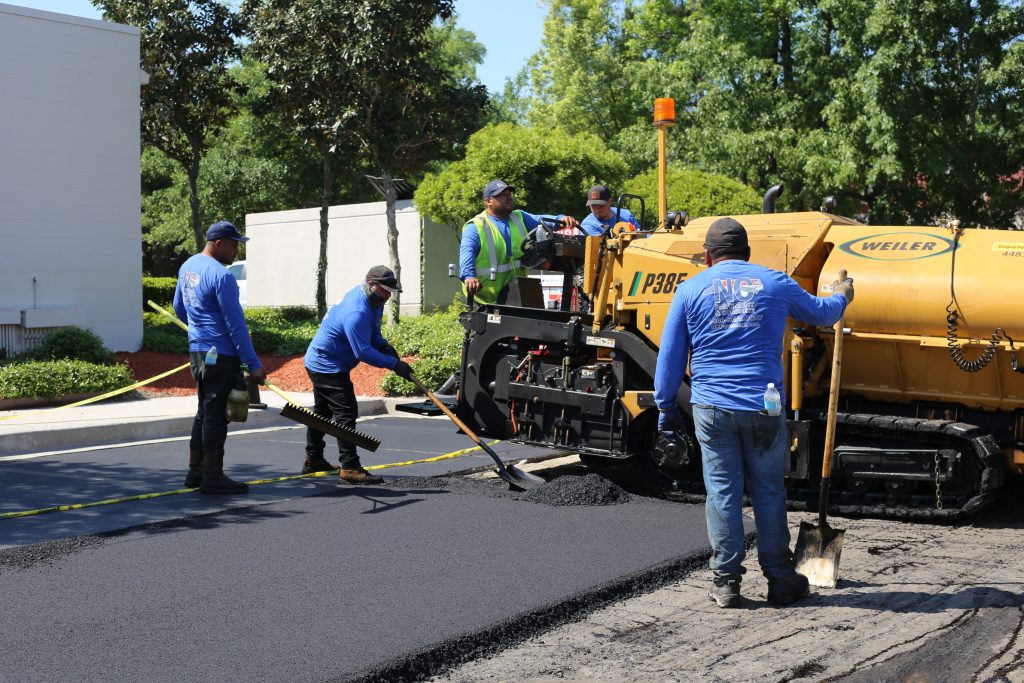If you manage or own a commercial property, you know that the condition of your asphalt surfaces—parking lots, access roads, or loading docks—plays a critical role in curb appeal, safety, and functionality. But when that surface starts to show wear and tear, you’ll face an important decision: Do you need a full repaving job, or will a commercial asphalt overlay do the trick?
In this guide, we’ll break down the differences between the two, the scenarios where each makes sense, and how to make the right long-term investment for your commercial property.
Commercial Asphalt Overlay
A commercial asphalt overlay is the process of laying a new layer of asphalt, usually 1.5 to 2 inches thick, over existing pavement. It’s a cost-effective way to restore surface smoothness and extend the life of your pavement without removing the existing base.
Best For: Surfaces with minor to moderate surface damage
Not Ideal For: Pavement with deep structural issues, drainage problems, or widespread cracking
Full Repaving
Full repaving involves removing the existing asphalt down to the sub-base, evaluating and repairing the base layer, and then installing new asphalt entirely from scratch. This method addresses both surface and structural damage.
Best For: Pavement with structural failure, sub-base erosion, or drainage problems
Not Ideal For: Surfaces that only need cosmetic or superficial repairs
Signs You May Only Need a Commercial Overlay
Not every crack or pothole means you’re headed for a complete overhaul. Here are signs a commercial overlay might be the right call:
- Surface cracking is localized or minimal
- Drainage is still functioning properly
- The base layer remains structurally sound
- No signs of “alligator” cracking or heaving
- The asphalt is 8–15 years old but otherwise stable
Bonus: Overlays can often be completed faster and with less disruption to your business operations.
When Full Repaving Is the Smarter Investment
In some cases, choosing a quick fix like an overlay could cost you more in the long run. Full repaving is a better option when:
- You see widespread alligator cracking (a sign of base failure)
- There are persistent potholes even after repairs
- The surface shows signs of drainage or erosion issues
- You’ve done multiple overlays already, and the surface is now too high
- ADA compliance requires re-grading
Example: If your commercial lot is collecting water after every rainstorm, slapping on an overlay won’t fix the slope or eliminate standing water—it just buries the problem.
Cost Comparison: Overlay vs. Repaving
| Project Type | Typical Cost per Square Foot | Lifespan |
|---|---|---|
| Asphalt Overlay | $1.50 – $3.00 | 8–12 years |
| Full Repaving | $3.50 – $7.00+ | 15–25 years |
While overlays are less expensive up front, they’re not always the best choice when long-term performance and safety are on the line.
Commercial-Specific Considerations
Here’s why this choice is especially important for commercial properties:
- High traffic volume: Delivery trucks, employees, and customers wear down pavement faster
- Liability risk: Cracked or unsafe surfaces could open you up to lawsuits
- ADA compliance: Commercial paving must meet strict accessibility guidelines
- Downtime: Choosing the right method can minimize business disruptions
How a Professional Contractor Decides
When evaluating your commercial site, paving contractors will typically:
- Inspect the base layer (using core sampling or visual cues)
- Check for drainage or grading issues
- Look for signs of fatigue cracking or rutting
- Evaluate past repairs or overlays
- Consider traffic load and expected usage
The result? A tailored recommendation that saves you money and minimizes risk.
Hybrid Solutions: Mill & Overlay
In some commercial cases, a mill & overlay is the sweet spot. This involves grinding down (milling) the top 1–2 inches of asphalt before applying the new layer. It allows for:
- Better adhesion
- Smoother transitions at curbs
- Preservation of existing elevations (useful in ADA-sensitive zones)
You get a fresh surface without the full cost of repaving.
Final Thoughts: Overlay or Repave?
Here’s a simple breakdown:
Choose an overlay when: the damage is mostly cosmetic, the base is strong, and your goal is short- to mid-term improvement.
Choose full repaving when: structural problems exist, drainage is compromised, or you want the longest-lasting result.
Related Articles
- What Is an Asphalt Overlay? Everything You Need to Know
- Standard Overlay vs. Mill & Overlay: Key Differences
- How Long Does Commercial Asphalt Last?
- Thin vs. Thick Overlays: Which One Is Best for Your Project?
Need Help Deciding?
If you’re not sure whether your commercial property needs an overlay or full repaving, reach out to our experienced team. We’ll perform a detailed on-site evaluation and recommend the most cost-effective and long-lasting solution.


